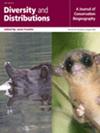Effects of Semi-Natural Habitats on Bird Occupancy in Different Intensity Agriculture: A Multi-Species Approach
Abstract
Aim
Agriculture is a primary factor underlying worldwide declines in biodiversity. Incorporating semi-natural habitat features within agricultural landscapes is considered an effective strategy for mitigating the biodiversity loss associated with agricultural intensification. However, few studies have investigated whether and how the biodiversity-supporting capacity of semi-natural habitats varies across landscape-level agricultural intensity gradients.
Location
Agroecosystems of Central-Eastern Jilin, China.
Methods
The 84 passive acoustic monitors were deployed across agricultural intensity gradients for 30 days, collecting avian vocalisation data from 04:00 to 07:00 on alternate days. The collected avian vocalisation data were processed using BirdNET (an AI-based sound analysis tool) and were complemented by expert verification. We employed multi-species occupancy models to estimate bird occupancy rates, with subsequent analysis examining the relative influence of semi-natural habitats on these rates under different agricultural intensity gradients.
Results
Our results indicated that bird occupancy probabilities were higher in low- and middle-intensity agricultural landscapes compared to high-intensity agricultural landscapes, particularly for habitat edge-dependent insectivores. The supportive role of semi-natural habitats on bird occupancy was strongest in middle-intensity agriculture, with insectivores benefiting most significantly. Specifically, enhancing both the number of semi-natural habitat types and woodland coverage under middle-intensity agricultural practices would benefit various bird guilds. Increased waterbody coverage within farmland ecosystems positively impacted insectivorous birds regardless of agricultural intensity. Additionally, open-habitat species benefit from diversified crop cultivation patterns in low-to-middle intensity systems.
Main Conclusions
Our results demonstrate that enhancing bird occupancy rates by semi-natural habitats depends on both the agricultural intensity context and the functional group. Our findings provide critical evidence for biodiversity conservation strategies in agricultural ecosystems and contribute to reducing geographical biases in agro-ecological research on avifauna.


 求助内容:
求助内容: 应助结果提醒方式:
应助结果提醒方式:


